Lead Scoring Is Important For Your Business: Here’s How to Create Scoring Model and Hand-Off Strategy
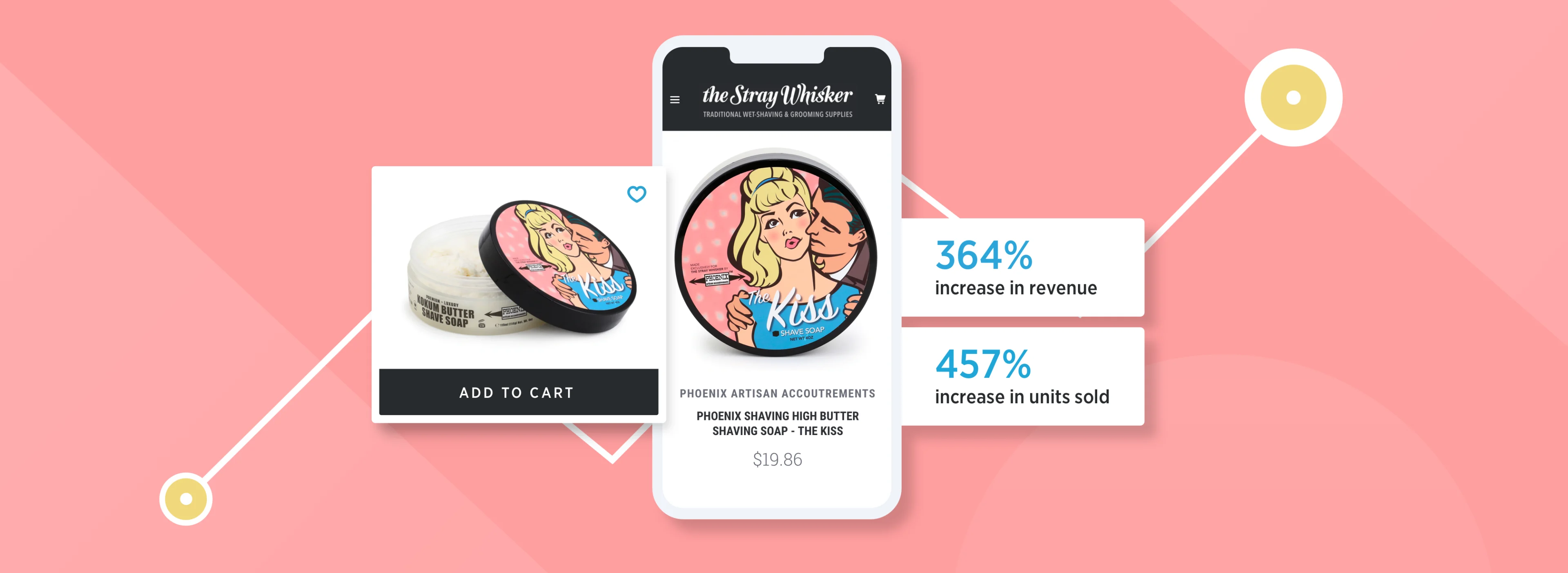
68% of businesses don’t practice any type of lead scoring.
Lead scoring allows you to quickly and easily identify flaky, half-hearted, and committed prospects. And ignoring it isn’t a recipe for long-term, sustainable success.
With lead scoring, you don’t waste loads of time on unworthy prospects, and you don’t ignore people on the edge of buying.
But what exactly is lead scoring and why is it so important for your business? And how do you do it?
Let’s get started.
What is Lead Scoring?
To implement a lead scoring strategy for your marketing and sales teams, you first need to understand what lead scoring is.
Here’s how HubSpot puts it:
“Lead scoring is a methodology used to rank prospects against a scale that represents the perceived value each lead represents to the organization.”
That was helpful. Sort of. But that definition is still a bit vague.
Think about it this way: lead scoring is a way to categorize prospects by level of commitment.
Most of the time, the lead scoring system is point-based. This means that someone who is more committed and interested in your product receives a higher lead score than someone who shows minimal interest.
Then, the marketing and sales teams (together) decide which prospects deserve which treatment based on their level of interest and fit with your product.
On the surface, lead scoring really is that simple. But, as with all systems of measurement, there are further layers of depth.
Because finding an acceptable “lead scoring template” online won’t happen. It doesn’t exist. Your business is unique. So your own lead scoring model will be, too. Instead, you want to start by tracking two primary facets of prospect qualification:
The general way that the person fits with your business.
The person’s actual level of interest and engagement with your product.
Your ideal client will receive a high lead score in both categories.
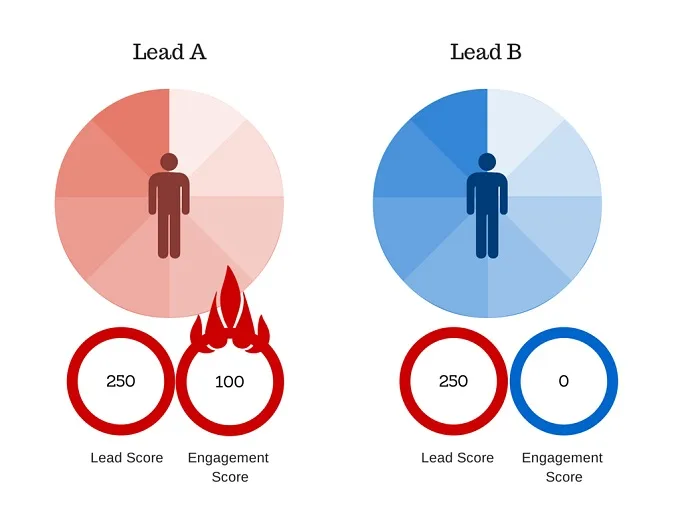
Lead scoring allows you to tell which prospects are worth your time and which aren’t.
And it allows you to do so systematically rather than by what “feels right” at the time.
Similar to marketing segmentation, you can then group people into categories that define their interest scores.
You’ll have the groups who you need to “fire”, the people who you should continue engaging with but aren’t ready to buy, and the hot prospects that just need a tiny bit of convincing to make a purchase decision.
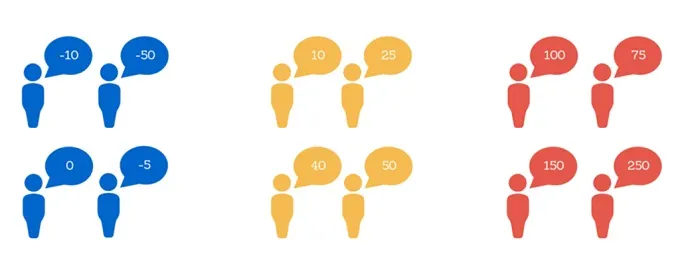
With all of that prospect information, the benefits become obvious.
Now you can spend more time pursuing the prospects that matter most and ditch the ones that matter least, helping you slash acquisition costs and increase lifetime values.
But the benefits of lead scoring go much deeper than that…
Why is Lead Scoring Vital to your Business?
You know that your sales team should spend a massive portion of their time following up with prospects who’ve shown interest in your service or product.
But here’s what you — or, rather, your sales team — don’t know.
You don’t know who to follow up with. And you’re not alone in that ignorance.
70% of leads and sales are lost because of poor follow-up practices.
That’s almost three out of four people that don’t buy from you because you didn’t follow up with them. Yikes.
But that’s only the tip of the marketing-struggle iceberg.
In fact, 65% of companies say that generating traffic and leads is one of their top marketing challenges and 43% said that proving the ROI of their marketing activities was a top challenge.
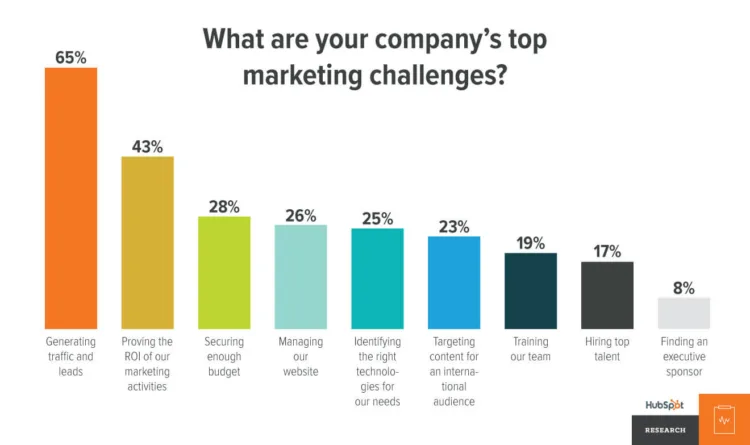
Believe it or not, lead scoring might offer a solution for those very struggles.
Specifically, the top benefits of companies that use lead scoring are a more measurable return on investment (ROI), an increased conversion rate, and higher sales productivity and effectiveness.
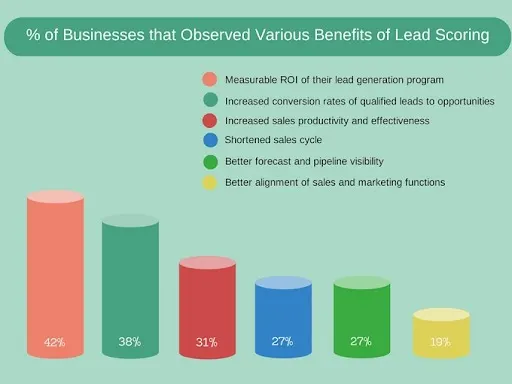
Want to understand your marketing ROI better, generate more traffic and leads, and have a more effective sales team?
Lead scoring is your savior because it can completely automate:
Highlighting promising leads
Ditching pointless leads
Nurturing medium-commitment leads
Here’s what that looks like. When someone isn’t showing any interest, they get left behind.
But when someone is showing a moderate amount of interest, you try to recycle them until they finally become a customer.
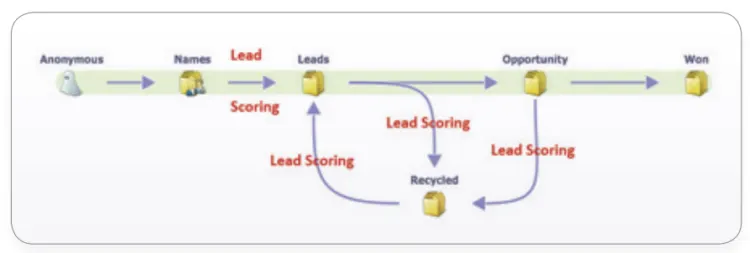
Lead scoring, in other words, provides the segmentation engine that your marketing automation activities need to thrive.
That’s why 68% of highly effective marketers counted lead scoring as a top contributor to their revenue.
Or why companies who use lead scoring regularly see a 77% higher lead generation ROI than their non-lead-scoring counterparts.
In the words of Laura Ramos at Forrester Research,
“B2B marketers who emphasize lead volume over lead quality reduce sales efficiency, increase campaign costs, and fuel the gap between sales and marketing. To generate qualified demand, marketers need technology and processes that capture lead quality information; validate, score, and classify leads.”
Here’s how you’re going to leverage all of that lead-scoring potential.
Step #1: Determine the Characteristics of Your Personas and Segments
All good things start with personas. The trick is to start broad before you go narrow.
There are people who consistently engage with your content marketing efforts. They click on your ads, read your blog posts, and comment on your stuff.
However, these people aren’t necessarily buying from you yet.
Those will have different characteristics from the loyal customer with the highest lifetime value.
There are distinct differences. There are reasons one group has purchased, and the other is on the fence.
Whatever the case, customer segments and personas are high-level groups of people who are interested in your content, services, products, and business at various levels.
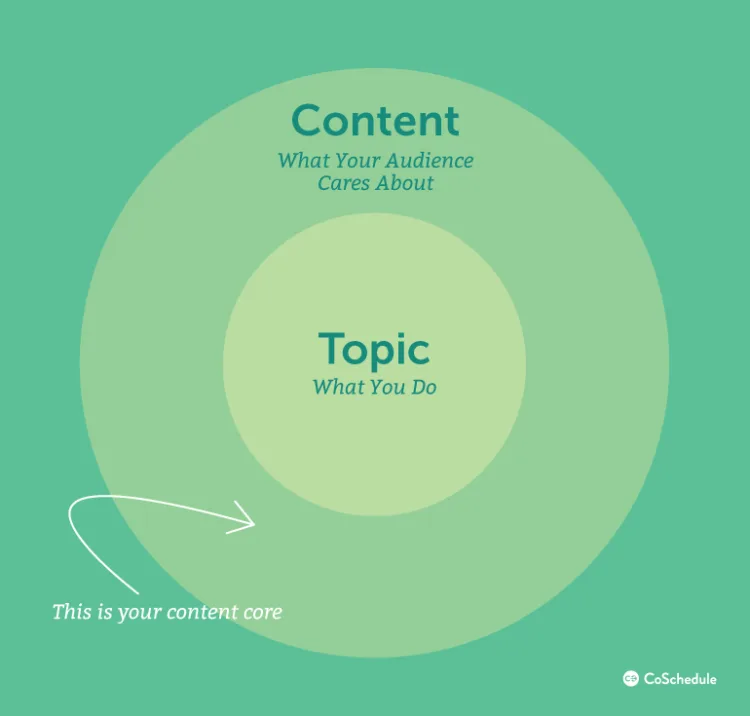
To determine who your target market is, ask yourself:
What is the identity of my company and what problem does it solve, holistically?
Who experiences those problems and is likely to engage with my company regularly?
Who has purchased, who hasn’t, and why (for each)?
What language / messaging tone, style, audience, and intent has worked or failed?
You might, for instance, find that males who are in their 20’s are your target market.
Or, perhaps, females in their 30’s. But the point here is to get deeper.
“Ecommerce sites can do some really cool predictive personalization based on behavioral patterns on a website. There are software solutions out there designed to detect when a visitor is price sensitive, or about to exit the site, or is worried about shipping costs. When you can detect intent signals like this, you can deliver appropriate messaging to help assuage doubts and encourage the right products.” – Alex Birkett, Sr. Growth Marketing Manager, HubSpot
Lead scoring goes beyond static demographics into actual user behavior.
The ‘five whys’ can also help you go deeper into each one:
Who are they?
What do they want?
Where are they coming from?
When do they engage with you the most?
Why are they interested in you?
Those five simple questions will work wonders to enhance your understanding of your target market.
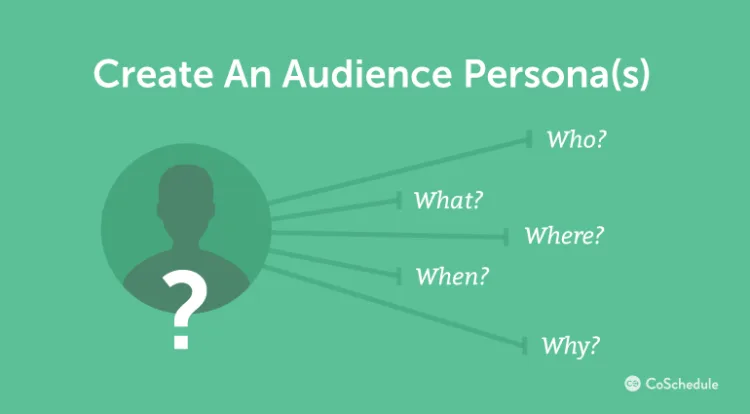
Think of these people as your marketing qualified leads.
They engage with your brand, but they haven’t necessarily bought yet.
Because one of the primary benefits of lead scoring is the ability to transition prospects from the marketing team to the sales team as sales-ready leads.
As Emily Salus from CollabNet says,
“Lead scoring should be an indicator of sales-readiness – not of how much of a fan they are of [our company]. That goal requires a close collaboration between the sales reps and marketing teams to establish a threshold for when a lead is ready to be passed on to sales.”
Next, it’s time to move on to determining your ideal customer.
Step #2: Determine the Characteristics of your Ideal Customer
The most important part of the lead scoring process is determining the characteristics of people who are most likely to buy.
It sounds trite on the surface. But there’s a lot happening here.
When trying to understand the difference between high-commitment behaviors and low (or negative) commitment behaviors, there are three basic types of criteria you should consider.
Explicit criteria.
Implicit criteria.
Negative criteria.
The first is straightforward behavioral information. Measuring explicit criteria means measuring things like…
Customer potential size.
Geographic customer locations.
Degree of purchasing authority.
Past purchases.
Job title.
This information tells you who the person is and whether or not they fit into your ideal client mold.
It will reveal, for instance, whether they have purchasing power within their own business or not.
Or whether their own business is even big (or small) enough to work with the service or product you offer.
Implicit criteria, on the other hand, is behavioral data that tells you how interested someone is in your service, product, or business.
It doesn’t tell you whether they are a fit for your company, it simply tells you whether they engage with your content, website, and advertisements.
For implicit criteria, consider metrics like:
Number of phone calls.
Time-on-page.
Number of website visits.
Webinar attendance.
Email interactions.
In the end, the more that people engage with your brand, the more worthy they are of your marketing and sales focus.
Negative criteria tell you just the opposite. It tells you about the people that you should start ignoring because they simply aren’t interested in you.
And that’s okay. It’s far better to ditch them early then spend loads of time trying to capture a lead that will never convert.
For negative criteria, consider occurrences like these…
Low email open and click-through rate.
Long inactivity periods.
Very little engagement.
Any unsubscribes to previous campaigns.
Then, if someone meets all of your negative criteria, leave them behind. People might receive positive scores for actions in the first two categories, while they’ll get points deducted in this last one.
At the end of the day, your persona or avatar will look something like this, with a section for goals and values, challenges and paint points, objections and behaviors, and sources of information.
After developing your “Customer Avatar” and pushing deeper than demographics, you can assign different points to different behaviors and craft a stellar lead-scoring process.
Step #3: Create your Point System
When creating your point system, you want to assign more points to higher-commitment actions, and less (or negative) points to low-commitment actions.
For instance, clicking through a CTA in your ecommerce email campaign is good. But it’s hardly a major action.
So it might only get five points while an eBook opt-in gets 10. And a free trial commitment might get up to 25 or 50. And visits to your actual local store (if you have one) would be off the charts.
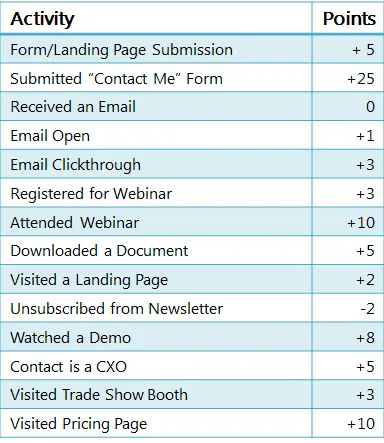
Or this…
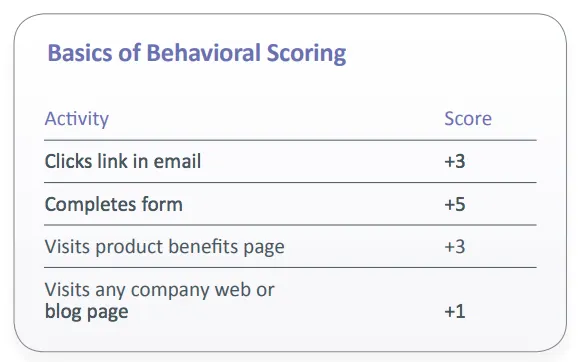
Then, whenever someone takes an action, they received the points associated with that action.
All of the points are added up to a total. The higher the total, the more interested the prospect.
The lower the total, the higher likelihood that you should let the prospect go:
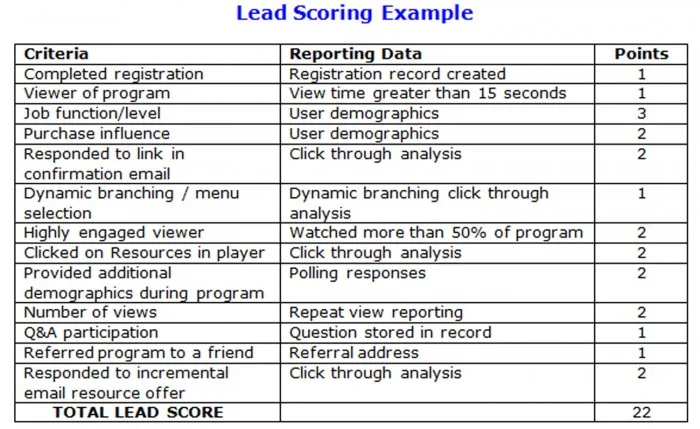
Tons of this information can be gathered, collected, and analyzed in a good quality help desk software.

Lastly, you will want to assign point categories. Ask yourself these questions.
How many points does someone need to be a top-priority lead?
How many points does someone need to be worth nurturing?
How many points does someone need to be left behind in the dust?
Categorize those point categories automatically for your marketing and sales team’s reference.
That way, they can quickly determine who they should call and how committed that person is.
“A lead that you gathered from coupon pop-up is more likely to buy than a contest lead. Also, a lead that just submitted their information is more likely to buy than a lead that is 6-months old. Furthermore, a lead that has open your last 5 emails is more likely to buy than the one that hasn’t.” – Eric Carlson, Co-Founder, 10xFactory
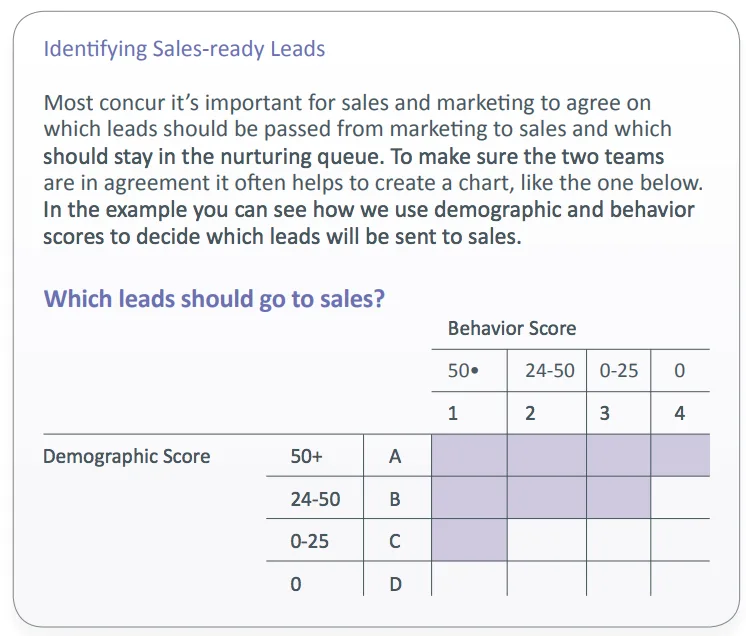
But remember: there is no ‘right’ answer. There’s no range or benchmark from other companies.
Instead, you’ll have to consistently test and iterate your ideal customer assumptions so that your scoring system is doing what it’s ultimately supposed to: Delivering high-value leads, nurturing middle-of-the-road ones, and politely turning away bad ones.
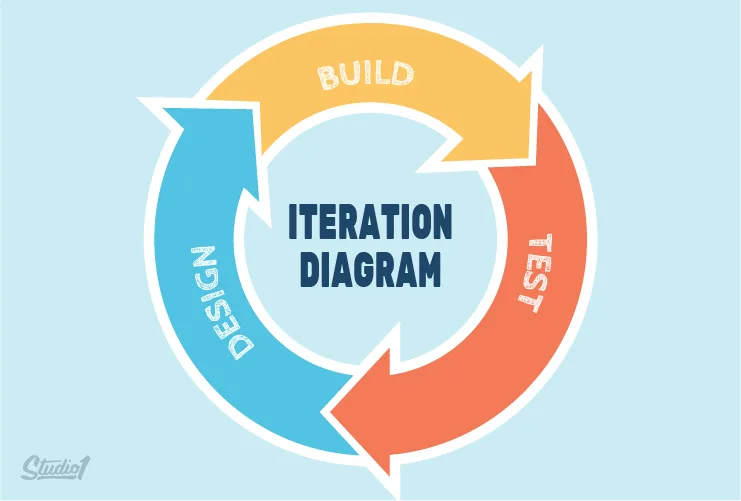
There will be problems and issues at first. You’ll have to tweak and work through the kinks.
But work closely with your sales team and CRM system to determine those issues and iterate until you land on the perfect formula.
3 Lead Scoring Tips from Industry Experts
“Lead scoring is a great way to customize your follow up processes – but two words of caution.
First, you had better make sure that you have a proven scoring model before you implement anything on a large scale. Companies get themselves into trouble when they think they knew what makes a more qualified lead, and have not fully tested their assumptions.
Second, it only makes sense to use lead scoring if you are going to use it in some way. If I told you that a prospect had a 20% likelihood of converting and another had a 5% likelihood of converting, how would you treat them differently. If the answer is, you wouldn’t, then lead scoring doesn’t make sense for you.” – Zach Heller, Sr. Marketing Director, New York Institute of Art and Design
“A lead scoring model will give you a ton of info about your potential customer/clients that you then have to make the time to use.
I know many merchants who treat the automated reports from their analytics tools like junk mail.
There are a ton of tools out there which can make qualifying site visitors easy, but they’re only worth the monthly fee if you dedicate the time to make those metrics mean something.” – Joe Chilson, Head Writer and Project Manager, 1Digital Agency
“Ecommerce businesses need lead scoring so they can understand who’s window shopping and who’s ready to buy immediately.
With ecommerce lead scoring you can introduce more values related to demographics (geography, gender, age, etc) and user behavior (actions taken on different pages), resulting in super-targeted and personalized, real-time campaigns for leads moving through every step of the funnel.” – Talar Malakian, Business Unit Director, Salted Stone
Conclusion
Most businesses don’t practice any form of lead scoring. Sadly, that’s to their own demise.
Those businesses will likely end up spending loads of money and energy trying to convert pointless leads, and they will unintentionally ignore the promising ones.
You, of course, don’t want to be one of those businesses.
And you can avoid becoming one by determining who your target market is, who your ideal customer is, and then creating a point system to measure the commitment level of your prospects.
It’s a win for your business. A win for your prospects. And a win for your ROI.



